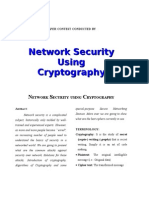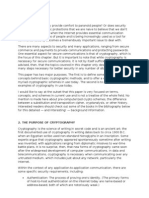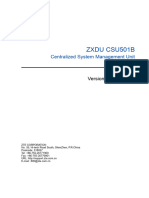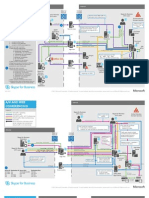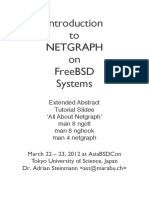0% found this document useful (0 votes)
195 views7 pagesCryptography and Its Application
This document provides an overview of cryptography and its applications. It discusses the purpose of cryptography in protecting data through encryption. It outlines different types of cryptographic algorithms like secret key cryptography, public key cryptography, and hash functions. It also examines trust models used in cryptography like PGP's web of trust, Kerberos, and public key certificates. The document gives examples of cryptography in applications like password protection using protocols like CHAP, and IP security.
Uploaded by
Prabahar RamasamyCopyright
© Attribution Non-Commercial (BY-NC)
We take content rights seriously. If you suspect this is your content, claim it here.
Available Formats
Download as DOCX, PDF, TXT or read online on Scribd
0% found this document useful (0 votes)
195 views7 pagesCryptography and Its Application
This document provides an overview of cryptography and its applications. It discusses the purpose of cryptography in protecting data through encryption. It outlines different types of cryptographic algorithms like secret key cryptography, public key cryptography, and hash functions. It also examines trust models used in cryptography like PGP's web of trust, Kerberos, and public key certificates. The document gives examples of cryptography in applications like password protection using protocols like CHAP, and IP security.
Uploaded by
Prabahar RamasamyCopyright
© Attribution Non-Commercial (BY-NC)
We take content rights seriously. If you suspect this is your content, claim it here.
Available Formats
Download as DOCX, PDF, TXT or read online on Scribd
/ 7










